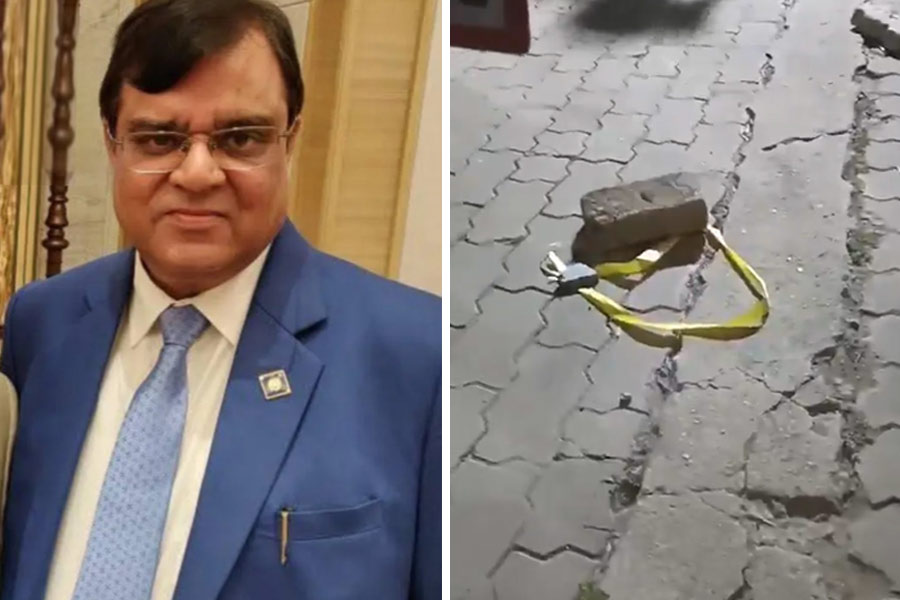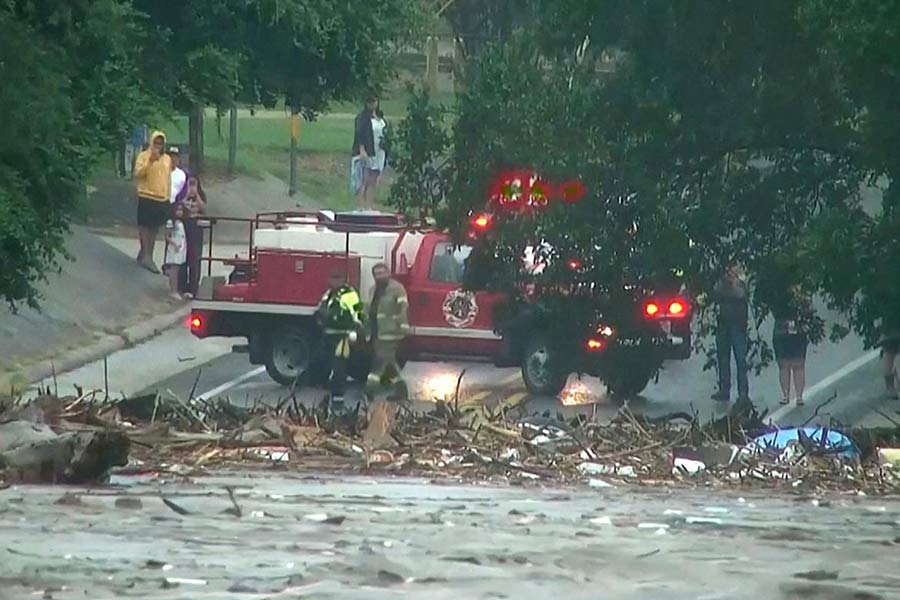 |
| Off the beaten track: Off-roading is all about driving on unconventional surfaces |
Travelling on a path seldom taken is what off-roading is all about. As the name suggests, off-roading deals with driving off the road on unconventional surfaces. And the vehicles best equipped to handle such rocky terrain, or sand and gravel, river beds or even snow, are jeeps. “A casual off-road could be on the beach, but serious road trips involve tricky and at times dangerous terrain,” says Anjan Cariappa, an animator from Chennai and the moderator of the first-of-its-kind group in India, Jeep Thrills. Anirban Sinha, a software professional in Calcutta, agrees. “Off-roading refers to driving on surfaces which are impossible for normal passenger cars like a Maruti 800 or an Ambassador to tackle,” he says.
Off-roading is a recreational sport and popular among the owners of “four-wheel drive” or “all-terrain vehicles”. This sport, which is gaining popularity in India, has different levels, based on experience and equipment. Greenlaning is probably the easiest kind of off-road, generally suitable for any vehicle with a four-wheel drive. The term “greenlane” refers to unpaved tracks such as forest paths and older roads. Greenlaning is especially meant for those who enjoy exploring and travelling through the countryside. Rather than putting their vehicle to test under adverse conditions, they can access areas which are seldom traversed by normal passenger cars.
Dune bashing, which involves driving over sand dunes, and mud plugging, an attempt to drive in a large area of wet mud or clay as smoothly as possible, are conditions that hard-core off-roaders would crave for. Rock crawling, a very technical kind of off-road, is performed by installing large tyres and modifying suspension components and also changing gears to allow slow speeds while crossing hurdles.
Sinha, who owns a 1982 Mahindra CL (army model) jeep, feels that these vehicles are most suitable for an off-road as they have a higher ground clearance, are equipped with a four-wheel drive and are inherently tougher than normal passenger cars. Cariappa, a proud owner of a World War II Willy’s model, explains: “A normal road car has just two driving wheels — either the front or the rear — which pull and push the vehicle forward. In a jeep, all four wheels are enabled, thus giving it the ability to go anywhere.”
Off-roaders are usually partial towards jeeps and claim they are the absolute all-terrain vehicle, but alternatives to this mean machine could be the Maruti Gypsy, Jonga, Tempo Trax and the military version of the Tata Sumo. Sports utility vehicles (SUVs) such as a Scorpio are also options but owing to the electronics involved, they are more complex to drive. Although they score high with respect to creature comforts, they are heavier and less manoeuvrable.
Suresh Stephen, a co-moderator of the online club from Bangalore, and the owner of a 1991 model of the Mahindra CJ340, points out: “Machine reliability is of utmost importance for serious off-roading. One must practise the concept of ‘preventive maintenance’ following a proper schedule. Old vehicles like jeeps require constant attention and maintaining new SUVs could cost you a pretty penny.”
It is imperative to know your vehicle thoroughly and to understand and appreciate its limitations as well. An SUV or a jeep has a higher centre of gravity than normal cars. This should be kept in mind while attempting those crucial turns. In fact, elementary physics could be of help when you’re stuck in any tricky situation. Says Sinha, “The wheelbase of an SUV is larger than the track. Therefore, it is easy for the vehicle to tip over sideways, as opposed to doing a full cartwheel, while mounting a hill. Corollary: never attempt traversing a hill sideways. Either go up or come down.”
When caught in water, it’s best to keep your cool and wade through by driving slowly, without splashing water all over the ignition components. Sinha adds that diesel engines score over petrol in this area. But when stuck in a sticky situation, for instance in a sandy or muddy terrain, it’s best to use the forward and reverse gears alternately and rock your boat to a solid surface. And as traction available could be scarce, one should try and build up momentum before attempting such terrain. Working the steering wheel from side to side could allow the front tyres to gain some traction. Deflating tyres or using wider ones could help the vehicle to get a grip on sandy terrain.
Now that you know what off-roading is all about, why wait? Gear up and zoom off.
Need to know
![]() Go in groups: Always travel in groups of two or more vehicles.
Go in groups: Always travel in groups of two or more vehicles.
![]() Home alert: It’s advisable to alert someone back home about your road trip and expected time of return.
Home alert: It’s advisable to alert someone back home about your road trip and expected time of return.
![]() Tool kit: Bring a nylon/manila rope, extra fuel, water, a spare tyre, shovel, a proper tool-kit and a first-aid kit.
Tool kit: Bring a nylon/manila rope, extra fuel, water, a spare tyre, shovel, a proper tool-kit and a first-aid kit.
![]() Light your way: A destination map, flashlights, fire extinguisher, matches/lighter should find a place in your luggage space.
Light your way: A destination map, flashlights, fire extinguisher, matches/lighter should find a place in your luggage space.
![]() Know your car: Polish your skills and learn about the services/repair of your vehicle. And if you think you can’t tackle it, take a mechanic along.
Know your car: Polish your skills and learn about the services/repair of your vehicle. And if you think you can’t tackle it, take a mechanic along.
![]() Duplicate key: Carry a spare key for your vehicle and keep it with you instead of storing it inside.
Duplicate key: Carry a spare key for your vehicle and keep it with you instead of storing it inside.
![]() Hot spots: Ideal spots: brick kilns in the Rajarhat-Narayanpur area, New Town Expressway; banks of the Ichhamati river in the Taki-Hasnabad area in the North 24 Parganas; Gongoni and Digha in Midnapore and the Ayodhya Hills and Maithon Dam in Purulia. Places such as Hashimare, Falakata, Binnaguri, Damdim and Kalchini in Jalpaiguri and Cooch Behar and the entire district of Darjeeling are good off-road spots.
Hot spots: Ideal spots: brick kilns in the Rajarhat-Narayanpur area, New Town Expressway; banks of the Ichhamati river in the Taki-Hasnabad area in the North 24 Parganas; Gongoni and Digha in Midnapore and the Ayodhya Hills and Maithon Dam in Purulia. Places such as Hashimare, Falakata, Binnaguri, Damdim and Kalchini in Jalpaiguri and Cooch Behar and the entire district of Darjeeling are good off-road spots.











